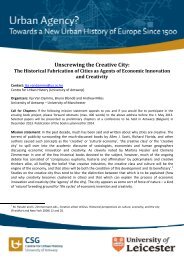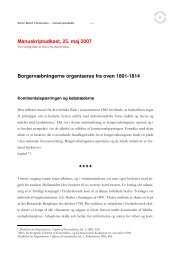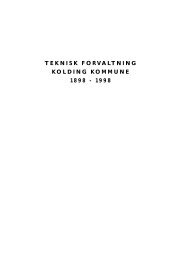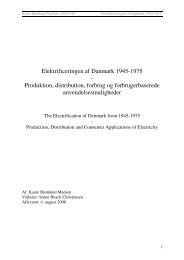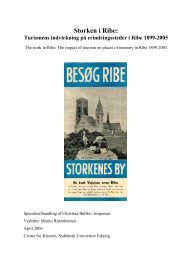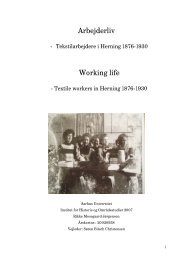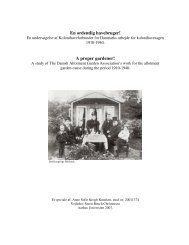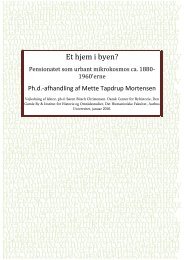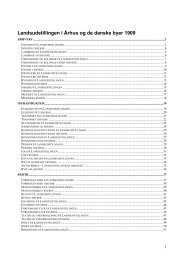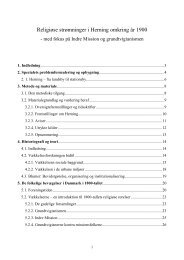Kongernes købstadsbesøg - Dansk Center for Byhistorie
Kongernes købstadsbesøg - Dansk Center for Byhistorie
Kongernes købstadsbesøg - Dansk Center for Byhistorie
You also want an ePaper? Increase the reach of your titles
YUMPU automatically turns print PDFs into web optimized ePapers that Google loves.
population’s homage during the royal visits. Civic guards were standard tribute to the king<br />
during royal visits, thereby rein<strong>for</strong>cing the perception that the majesty’s main<br />
responsibility was maintaining his role as the leader of the military. The military<br />
inclination of the monarch and the people’s expectations to him is in line with Danish<br />
society in the 18 th century. The kingdom was one of the most militarized countries in<br />
Europe compared to its population ratio. The navy was second only to Britain, and seen in<br />
relation to the population ratio, the Danish army was only surpassed by Prussia.<br />
There were also other celebrations of the royal entries such as triumphal arches,<br />
illuminations with pictures and songs. These revealed a perception of the monarchy as<br />
constituting a third of the universal triad: God, king/dynasty and territory. This was<br />
enshrouded in the fashionable ancient symbol of immortality, the pyramid. This made the<br />
king an indispensable part of society with a theocratic legitimisation. Thereby the<br />
particular personal character of the absolute king became less important.<br />
Christian 8 th was king during turbulent times in the Danish history. Absolutism<br />
was coming to an end, and liberals in both Denmark and the duchies were demanding a<br />
free constitution. This, however, Christian 8 th could not grant, fearing it would tear the<br />
country apart. At the same time, there were increasing hostilities between Danish and<br />
German oriented groups. The homage paid during royal visits also showed signs of<br />
inconsistency. Traditional <strong>for</strong>ms of homage, emphasizing the paternalistic king and God,<br />
were challenged by new ideas with the emphasis placed on contract thinking, exemplified<br />
through the love between monarch and inhabitants – a love that could be withdrawn. In his<br />
political life, as well as during his journeys, Christian 8 th tried to fulfil the people’s<br />
contradictive expectations. He emphasized both Herrschaft and Macht by showing interest<br />
in the conditions of the common people, and following up on local problems by using his<br />
Macht. But although he strived to meet the people’s expectations, his attempts were<br />
unsuccessful. His aristocratic preferences and intellectual air prevented him from gaining<br />
unconditional support, since he did not transmit equality as he was expected to.<br />
A few months after Christian 8 th ’s death, Denmark was given a free constitution,<br />
but at the same time the country was ripped apart by civil war. The constitution changed<br />
dramatically the status of the monarchy. The old prerogatives of power were taken away<br />
from the king. His Macht was substantially reduced although he initially was thought to<br />
play a political role. Up until the reign of Christian 10 th (1912-1946), this political position<br />
was slowly disappearing. This had profound impact on Christian 10 th ’s possibilities of<br />
power display. He could only transmit Herrschaft through his interest <strong>for</strong> the population’s<br />
98



